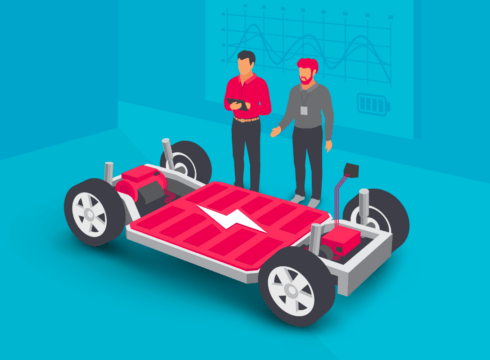The automobile industry contributes significantly to India’s GDP (7.1%), with the two-wheeler segment accounting for 73% of that total
To ensure a smooth transition to EVs, the Indian government, in February 2022, devised a quick fix by implementing the battery swapping policy
The government proposed the battery swapping policy to make electric mobility more affordable than ICE, as the battery accounts for nearly 40-50% of the cost of an electric vehicle
Inc42 Daily Brief
Stay Ahead With Daily News & Analysis on India’s Tech & Startup Economy
India is the second-largest two-wheeler manufacturer in the world. The automobile industry, for instance, contributes significantly to the country’s GDP (7.1%), with the two-wheeler segment accounting for 73% of that total. Due to disruptive technologies, government regulations, and policies aimed at achieving green mobility, the industry has been evolving at a faster rate over the past few years.
With formidable goals to make India a 100% electric vehicle nation by the year 2030, the Government of India has been aggressively promoting the electric push. For instance, the past decade has seen policies such as FAME I & II and the Production Linked Incentive Scheme (PLI) coupled with other incentives.
Nonetheless, there are some impediments to a smooth transition to EVs, including charging infrastructure and range anxiety. As a result, in February 2022, the Indian Government devised a quick fix by implementing the battery swapping policy.
Battery Swapping Policy Proposals Driving Electric Mobility
Reduce Downtime
The battery swapping policy would greatly benefit India’s ecommerce fleet, as many states have implemented stringent policies to ensure 100% electrification. A rider’s main concerns included range anxiety, charging time (it usually takes 2–6 hours to fully charge), and finding a charging station.
However, with battery swapping, the rider can simply hand over the depleted battery in exchange for a charged one, similar to refuelling at a gas station. As a result, battery swapping stations will most likely replace filling stations.
In terms of battery swapping, brands such as Ampere, Bounce Infinity, and Okinawa, among others, have already incorporated the model into their systems.
Affordability
The government of India proposed the battery swapping policy to make electric mobility more affordable than ICE, as the battery accounts for nearly 40-50% of the cost of an electric vehicle. Under the BaaS policy EV, consumers can now purchase a battery-less scooter from OEMs, lowering the initial cost.
Furthermore, consumers have the option of selecting the best-suited technology at the best price via a subscription plan from any BaaS provider and paying for battery charges throughout the vehicle’s lifetime.
According to industry retail sales data, nearly 2,40,662 electric vehicles were sold in India between January and June 2022. Therefore, by making EVs more affordable, the electric vehicle space is likely to emerge much stronger in a few months.
Interoperability Standards
The EV ecosystem is made up of various vehicle segments, brands, and models. As a result, there is a need to standardise battery packs so that they are interchangeable regardless of brand or segment. This is why the government included interoperability standards in the battery swapping policy — to ensure uniformity and standardisation.
To ensure a smooth ride over long distances, the batteries must not weigh more than 10 kilograms and have a cylindrical cell format with a minimum capacity of 1 kilowatt-hour. Subsequently, since the batteries are uniform, the cost of ownership for end users will be uniform or likely lower than previously.
Traceability
According to the proposed policy, swappable batteries will be assigned a unique identification number to ensure traceability throughout the battery lifecycle. The technical data pertaining to the battery will be embodied on the UIN of the battery pack by the OEMs, and the battery operator is responsible for storing the performance data and usage history at the time of EV application.
This would allow the end user to determine whether the swapped batteries have the same life as their original batteries, thereby reducing range anxiety.
Summing up
Subsidising battery costs, combined with the aforementioned benefits, can help to transform the EV industry and drive the electric push for India’s two-wheeler fleet. The policy benefits both OEMs and customers.
However, there are certain shortcomings that need to be addressed in the forthcoming policy for a smooth transition. The two-wheeler industry is quite optimistic that the government will assist in bridging the gaps existing in the ecosystem. This includes an assurance of flexibility in standards, financial assistance for setting up battery swapping stations and the launch of policies supporting the recycling infrastructure for reprocessing the e-waste.
{{#name}}{{name}}{{/name}}{{^name}}-{{/name}}
{{#description}}{{description}}...{{/description}}{{^description}}-{{/description}}
Note: We at Inc42 take our ethics very seriously. More information about it can be found here.


